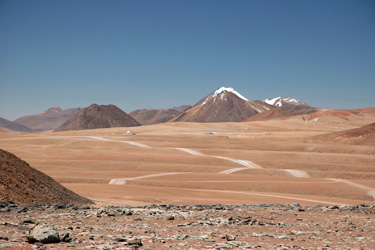Overview

The second phase of the Radiative Heating in Underexplored Bands Campaign (RHUBC-II) took place on Cerro Toco, a mountain rising from the Chajnantor Plateau in Chile. From August to October 2009, nearly a dozen instruments operated continuously to obtain measurements—such as temperature, pressure, humidity, and incoming and outgoing energy—for characterizing the atmospheric state. In addition, a combination of several spectrometers—highly sophisticated optical instruments used to measure the properties of light over a specific portion of the electromagnetic spectrum—obtained measurements from the infrared region of the spectrum.
Water vapor strongly absorbs solar and infrared energy in many bands throughout the electromagnetic spectrum. In these spectral regions, the atmosphere is essentially opaque at most surface locations around the earth. However, these spectral regions are very important to the absorption of energy in the middle-to-upper troposphere, where there is significantly less water vapor, and any errors in the strength of this absorption will result in errors in earth system models.
The Chajnantor plateau, which is located high in the Atacama desert, is one of the driest places in the world. At this location, these spectral regions where water vapor absorbs will be partially transparent. Thus, the accuracy of the models used to predict the absorption can be evaluated there.
Detailed information obtained from this field campaign is expected to greatly reduce uncertainties in the treatment of middle and upper tropospheric moisture in the radiation calculations used in earth system models. This effort is a follow-on to RHUBC, conducted in 2007 at the ACRF North Slope of Alaska site in Barrow.
Keep up with the Atmospheric Observer
Updates on ARM news, events, and opportunities delivered to your inbox
ARM User Profile
ARM welcomes users from all institutions and nations. A free ARM user account is needed to access ARM data.


















